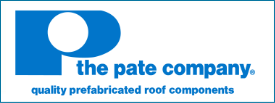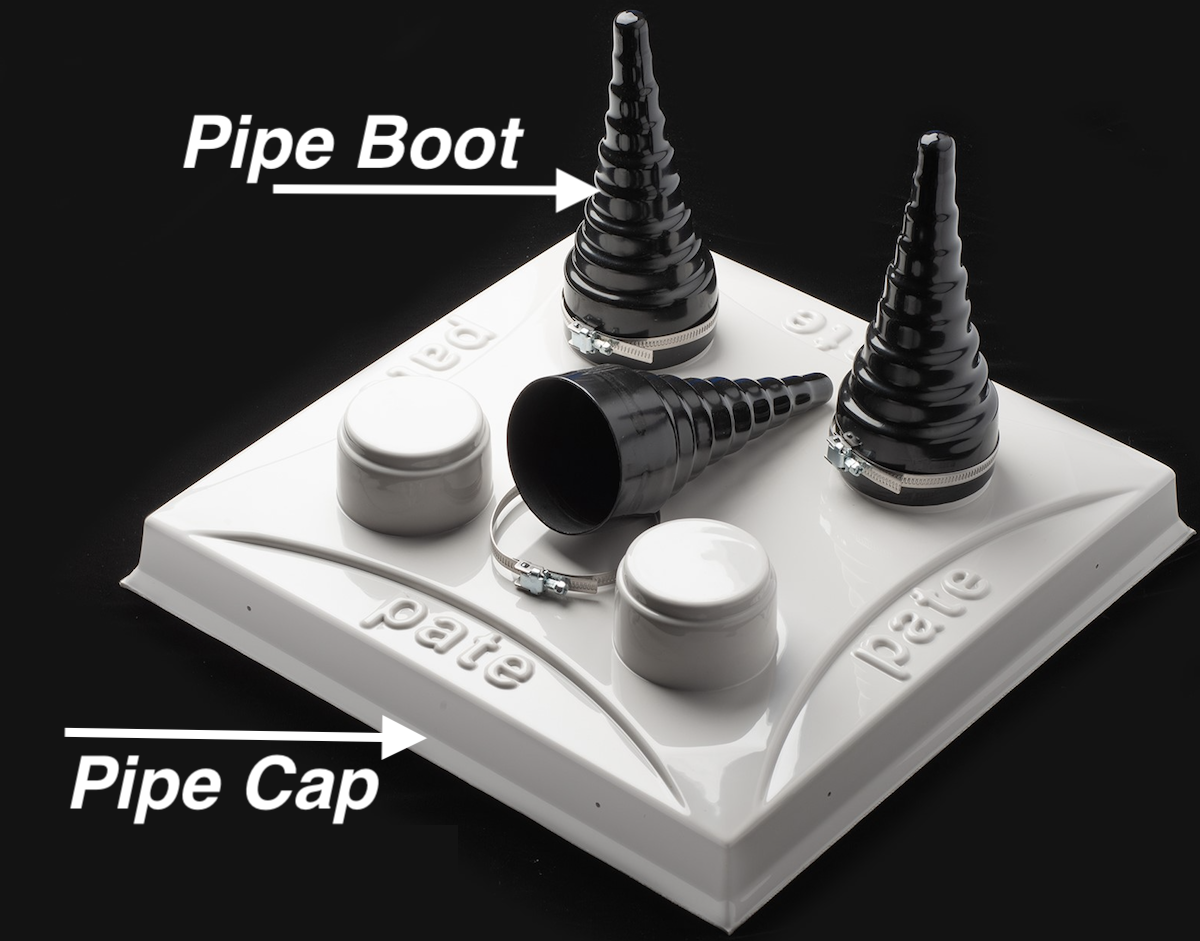For those who are new to the world of commercial/industrial roof penetration and equipment support products – or for anyone who wants a quick review of the common terms used in our industry – we’ve put together this handy list of terms and brief definitions. It’s a quick and easy way to familiar with the wide range of products available to assure the reliable and leak-free installation of mechanical, electrical and plumbing equipment.
Canted Design – A roof curb, equipment support or other roof product, designed with a 45-degree bend at the base. The wider base supports heavier loads and provides increased support for lateral loads.
Control Joint – A roof joint that separates large commercial roof areas into smaller sections to facilitate maintenance or future partial roof replacement.
Control Joint Curb – A roof curb designed to be placed on both sides of a control joint and attached to the roof deck.
Curb Adapter – A transition curb that allows new HVAC equipment to be installed on an existing roof opening or existing roof curb without modifying the existing roof structure.
Custom Pipe Box (CPB) – An insulated roof penetration unit with removable cover that mounts to a new or existing roof curb and allows pipe openings to be cut and sealed in the field.
Damper Holding Plate – A metal plate installed on the bottom of a roof curb to support and hold a backdraft or control damper in place. It ensures proper alignment and sealing between the damper and the mounted HVAC unit, helping maintain airflow performance and energy efficiency.
Duct Support (or Duct Saddle) – A cradle designed to support square or round ducts above the roof, reducing wear and maintaining duct alignment.
Equipment Base – A heavy-duty, reinforced, roof curb to support larger and heavier roof-mounted equipment such as RTUs, AHUs, condensing units, skylights, hatches, etc.
Equipment Supports – Support rails that do not penetrate the roof and provide structural support for mounting a range of equipment – including condensing units, fan supports, pipe supports, duct supports, etc.
Expansion Joint – A gap that is designed into a commercial roof to allow for thermal expansion and contraction of the roof system. Also designed to allow for expansion between roof segments and terminating walls.
Expansion Joint Curb – A roof curb designed to span the open area across a roof expansion joint and accommodate roof expansion and contraction.
Filter Curb Adapter – A curb or curb adapter that is equipped with internal filter packs to filter output air from HVAC units. Internal filter packs are accessible for maintenance thru exterior doors on the filter curb.
Flashing – A weatherproof material – typically sheet metal or a flexible membrane – used to seal joints and transitions around roof curbs, penetrations and other rooftop components, preventing water infiltration.
Insulated Curb – A curb that includes thermal insulation to reduce heat transfer and condensation, improving energy efficiency and roof longevity.
Load Modeling – Detailed calculations that determine the load capacity and structural integrity of rooftop equipment support products, assuring a product’s ability to meet performance expectations, as well as building codes and standards.
Metal Building Curbs – Designed specifically for buildings with metal roofs, these curbs match the ribbed or standing seam roof panel, while conforming to the roof slope.
Nailer – A wood or composite perimeter, located on the top of a roof curb or equipment support, that allows roofing membranes or flashing materials to be secured to the curb.
Nailer Jacket – A protective metal strap, placed over a nailer and welded to the curb base to prevent the nailer from being ripped from the base rail or curb in the event of strong winds or seismic events.
Multiple Pipe Curb Assembly (MPCA) – A roof curb designed to accommodate multiple pipe or conduit penetrations through a single, sealed unit.
Pate Sound Shield (PSS) – An acoustic treatment to reduce noise transfer through roof-mounted equipment curbs, which can be applied in the Pate factory or in the field.
Pipe Boot – A flexible sleeve that fits around a pipe and forms a seal with the flashing or curb to maintain water-tightness.
Pipe Cap Package (PCP) – An all-in-one, ready-to-install unit that includes watertight boots graduated to accommodate standard pipe sizes, adjustable stainless-steel pipe clamps, and a thermoplastic cover with scored sleeves for multiple pipes.
Pipe Flashing – A component (often rubber, silicone, or metal) that seals around a pipe where it penetrates the roof membrane, preventing leaks.
Pipe Hood (PH) – A hooded flashing unit installed over pipe penetrations to protect against rainwater and wind-driven moisture infiltration.
Pipe Portals (PPS) – A pre-manufactured, low profile, pipe penetration system consisting of a base curb and weatherproof cap that allows multiple pipes or conduits to enter the building while maintaining a watertight seal.
Pipe Penetration Products – Any of a number of products designed to permanently seal pipes that penetrate a building’s roof, including pipe hoods, pipe cap packages, pipe portals and more.
Pipe Roller Support – A roof-mounted support with rolling elements that allow pipe movement due to thermal expansion/contraction, while supporting vertical loads and protecting the roof membrane.
Pipe Supports – Products designed and manufactured to securely attach a range of piping – such as electrical conduit, refrigerant lines, gas lines and plumbing pipes – to the roof of a commercial/industrial building.
Rib Cap – A contoured cover or flashing used to bridge and seal over roof panel ribs or standing seams, often used where curbs intersect with metal roofing.
Raised-Cant Design – Used when a roof curb or other support product requires an elevated base to match roofing insulation thickness.
Roof Curb – A structural frame, typically made of galvanized steel or aluminum, mounted on a roof to support rooftop equipment (like HVAC units) and to ensure a watertight installation.
Roof Hatch – An access door built into the roof to allow maintenance personnel safe entry to the rooftop.
Smoke Vent – A roof-mounted device designed to open automatically during a fire, allowing smoke and heat to escape, aiding occupant egress and firefighter visibility.
Strut Support System – A modular framing system used to mount or brace rooftop equipment and piping securely (sometimes referred to by the brand name, Unistrut).
Support Stands – Adjustable-height structures used to elevate HVAC units, ducts, or pipes above the roof surface for drainage, access and airflow.
Ventilator – A gravity or power-assisted device used to exhaust air, fumes or heat from the interior of a building through the roof.
Vibration Isolation – The use of a mounting frame or pad with rubber or spring isolators to reduce vibration from HVAC equipment, protecting the roof and extending the life of the equipment.
Waterproofing Membrane – A protective layer applied around curbs, penetrations, and supports to prevent leaks and maintain the roof’s watertight integrity.
Weather Collar – A ring-shaped accessory that fits over pipe flashings to prevent water from entering around the pipe.



